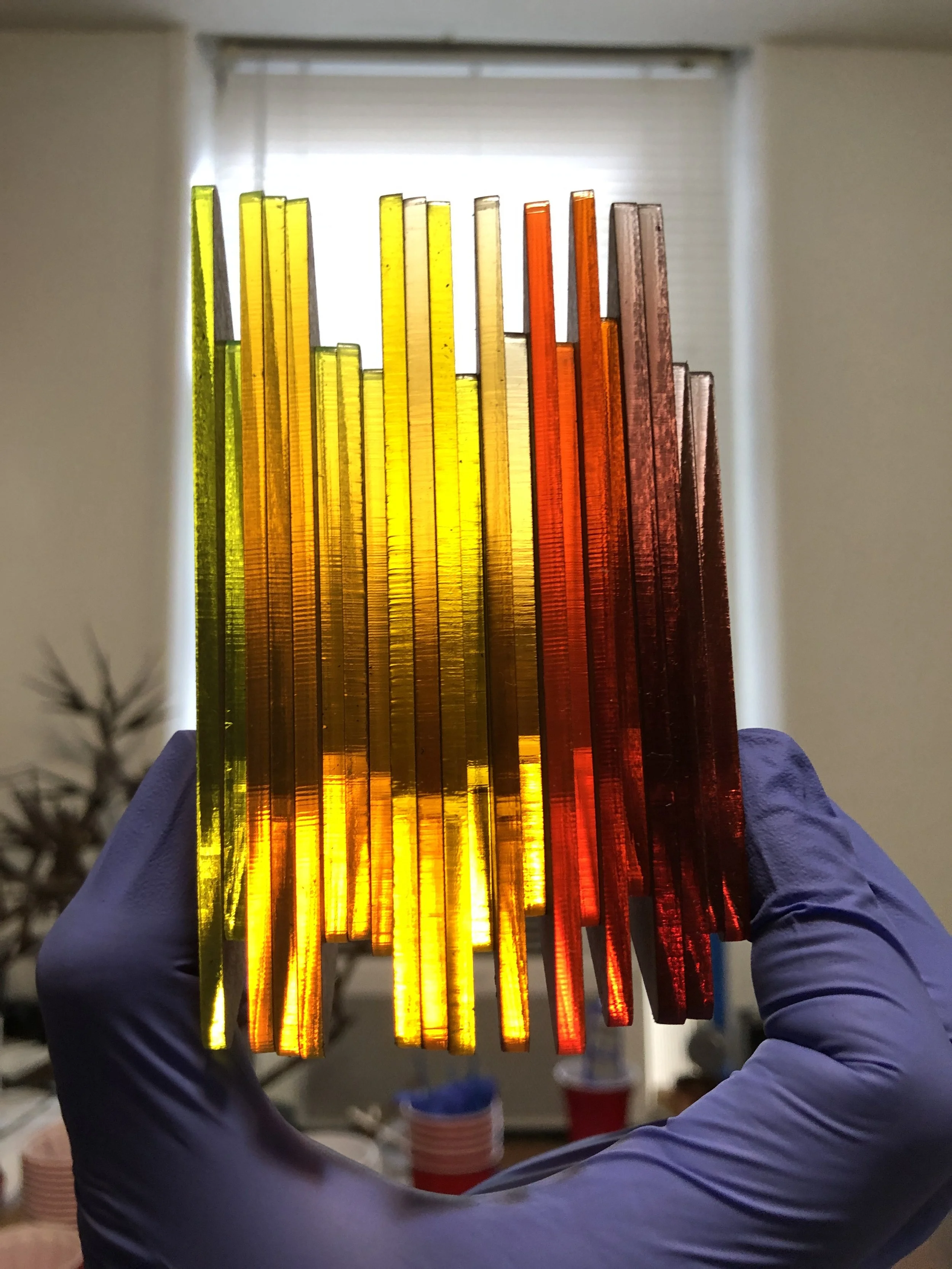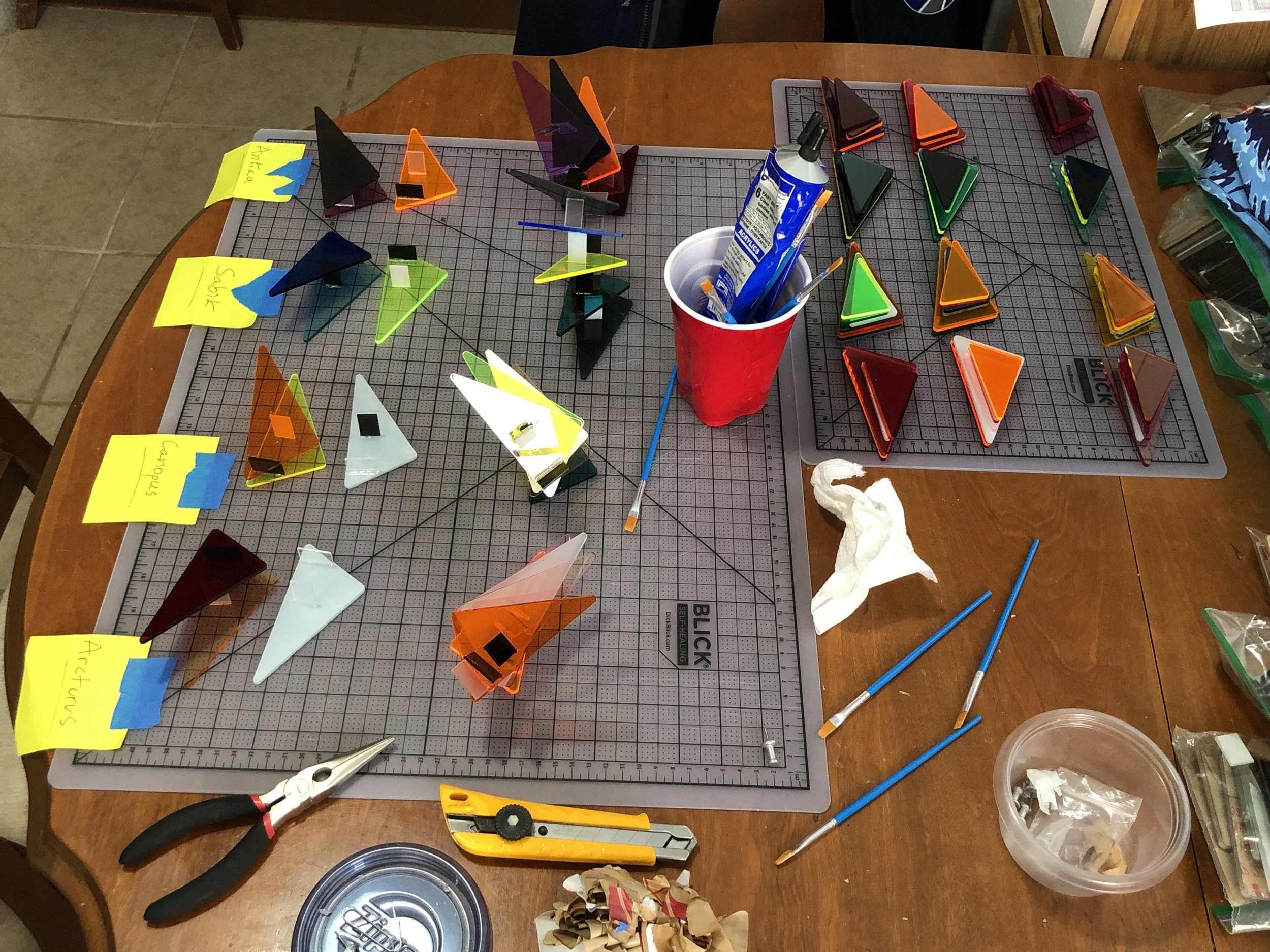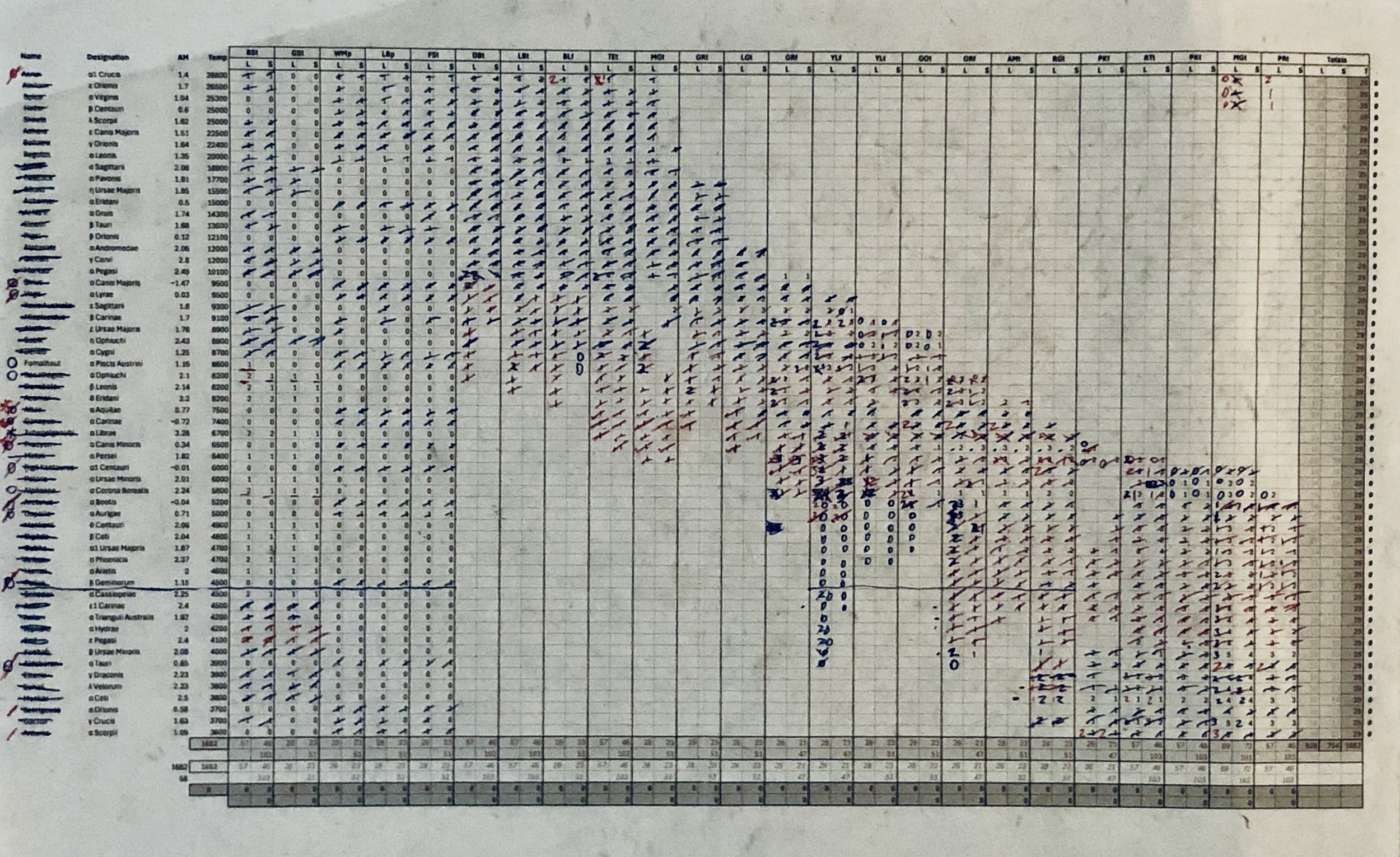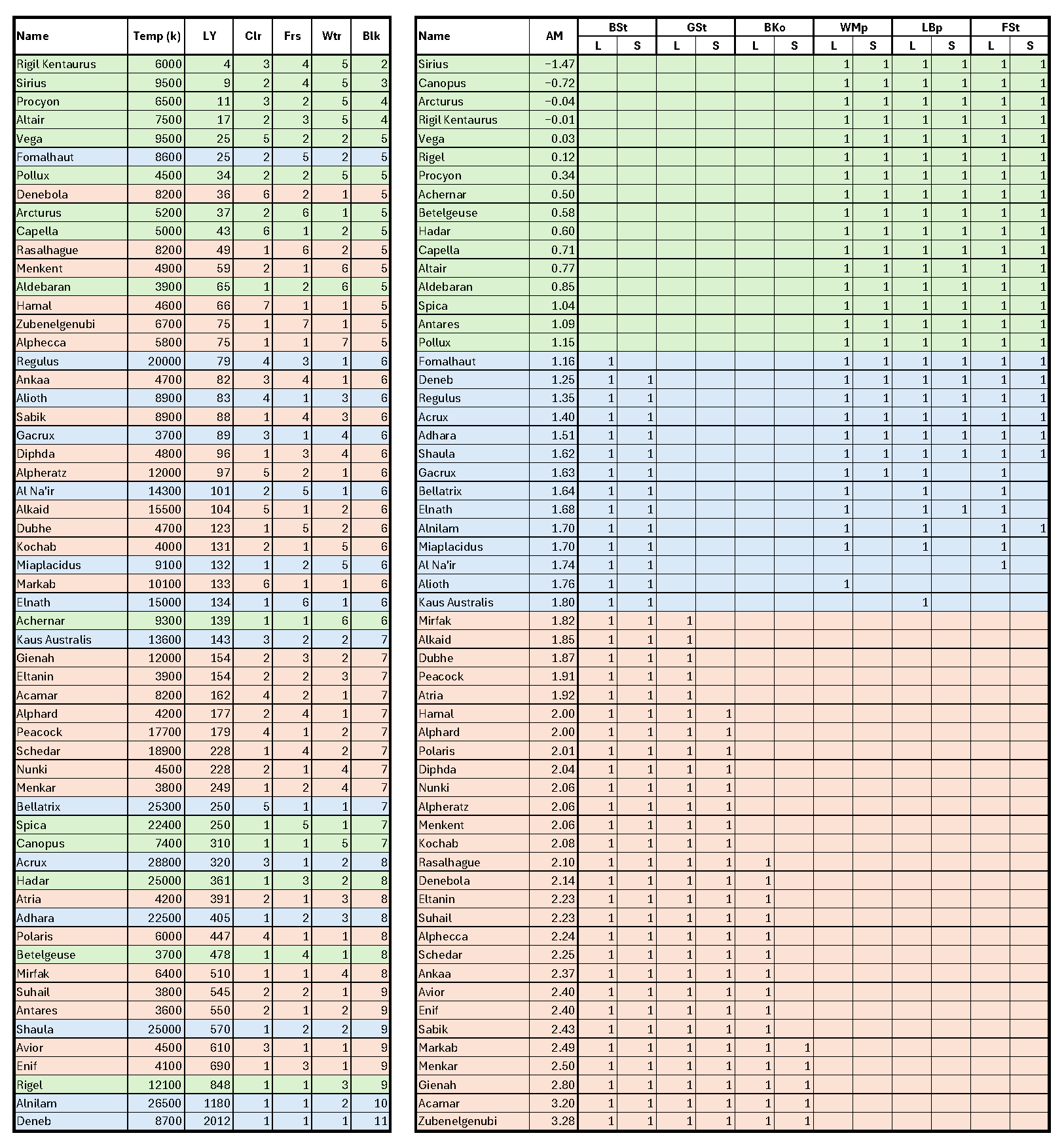
Navigational Stars
The Navigational Stars are series of sculptures that capture 58 of the brightest stars in our night sky. This comes from the US Navy’s formalized list of official 57 Navigational Stars, and including Polaris for 58. Our eyes can pick out about 6,000+ or so individual stars in the sky, so together these 58 sculptures represents roughly 1% of them.



Humans have been using heavenly bodies to navigate our globe for generations. The list itself was formalized in the 19th century by the US Navy and in coordination with other countries, however these same stars have had many names and have been known by many cultures through many centuries. We in fact come from star stuff, they provide us with limitless wonder and inspiration, and they help us find our way.
At the highest order each sculpture, or star, has a fixed number of twenty-nine triangles. This is half the number of triangles in each sculpture as the total number of sculptures in the series, exactly a 2:1 ratio. This ratio and resultant number was used as a kernel for leveling all the stars together as a collection of dots in the sky.
Large and Small sized triangles are used to break up the structural pattern and introduce a sense of individuality. This comes from random micro-structural harmonics within each form, and two different sizes help to increase the number of triangles per unit sheet of acrylic while still keeping the benchmark for total number of triangles per sculpture.
Each sculpture is mapped for color temperature, apparent magnitude, distance to Earth in light-years, and even coded for Northern or Southern hemispheres. There are nineteen total transparent colors cut into small and large triangles. A total of 1,682 triangles are arrayed between nineteen colors and fifty-eight sculptures. Three tones of white and black triangles are used to map each star’s apparent magnitude, while the colored triangles are used to map color temperature. The supporting pegs in each sculpture are used to map light-years to Earth. Everything is triple counted and checked, then redone over twice.
General distance in light-years to Earth is captured using four tones of fourteen supporting square pegs within each sculptural assembly; black (Blk), clear transparent (Clr), white translucent (Wtr), and frosted transparent (Frs). These code distances between four light years away (Rigil Kentaurus) with two black pegs, and over two-thousand light years away (Deneb) with eleven black pegs.
Apparent Magnitude (AM) is how bright each star appears to our eyes in the night sky independent of the actual distance to earth, and in the series is coded using anywhere between three and seven of the white and black triangles within each resultant form. These code an AM of -1.47 for Siris which is the brightest star on the list, to Zubenelgenubi, the dimmest star on the list with an AM of 3.28.
At the ends of the spectrum are the hotter blue stars which are mapped out with blue triangles, and the cooler red stars which are mapped out with red triangles. White and yellow stars use a mix of colors resultant on their individual color temperature as a function of the color temperature matrix.
The matrix lists transparent colors and stars on its main axis’ by RGB and kelvin color temperature respectively. This is a tool used to ensure a scaling field mapped from the available colors to the star’s temperature, from Antares at 3,600k to Acrux at 28,000K. Revisions were made as the assembly of stars took shape, as noted on the scanned sheet.



Data Analytics
An exercise in data analytics was performed to help understand the relationship between apparent magnitudes and distances in a primary sense, and in a periphery sense the relating color temperature of the stars.
The first move was to assign thee basic colors to the list of stars by descending apparent magnitude; green, blue, and red are assigned for bright, medium, and dim apparent magnitudes. The list is not split into thirds by number of stars on the list, but a third split across the scale of their apparent magnitudes. This first simple step yields an interesting result.
There are sixteen close stars assigned to green, fourteen medium stars assigned to blue, and twenty-eight dim stars assigned to red. About half the stars are grouped together towards the assigned dim/red end, while the bright/green and medium/blue stars split the remaining quarters.
Additional patters begin to emerge by assigning the colors out by star to a descending list of light-year distances. An intuitive notion is confirmed immediately, eight of the closest ten stars to us are also among the brightest (green-assigned) in our sky. Closer stars will look brighter. Only one of the dimmer (red-assigned) stars appears on the top ten closest to us, Denebola, at 36 lightyears from earth while only having an apparent magnitude of 2.14. If a star is one of the ten closest to us yet one of the relatively dimmer ones, intuition says the star itself must be relatively smaller than the other top ten.
Only two of the brightest, green color assigned stars are in bottom ten distant stars on the list (Betelgeuse and Rigel), which is also not as surprising when you think about it. Further away stars would look dimmer. With that said, one star in particular jumps out and can give us an insight into its physical characteristics. Rigel is the third furthest star on the list, shown at 848 light years away, yet is the sixth brightest star we see in our sky with an apparent magnitude of 0.12. From this alone we might infer the star is incredibly massive in size, being so far away yet so bright, and indeed Rigel is classified as a blue supergiant 61,500 to 363,000 times brighter than our own Sun, and over seventy times larger.





















